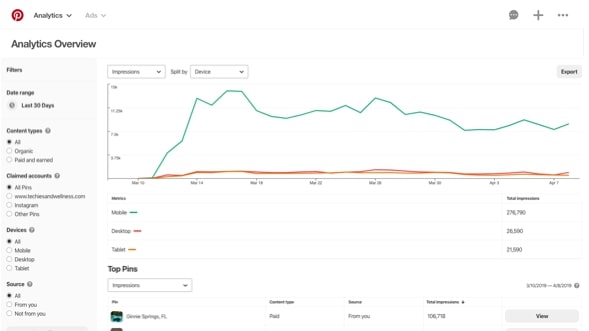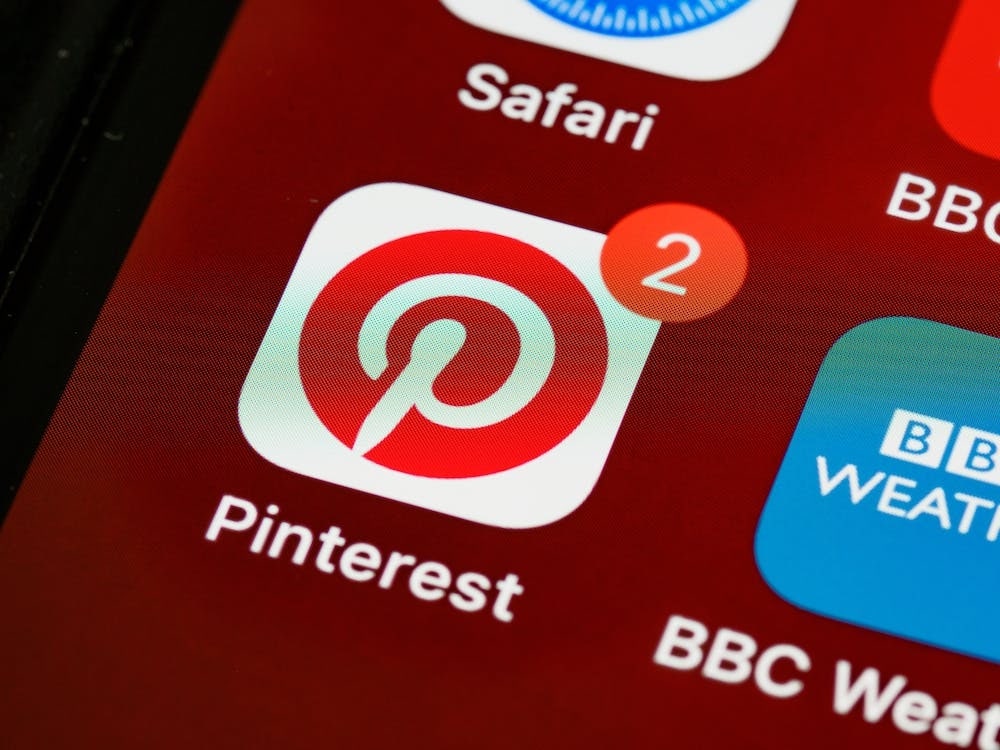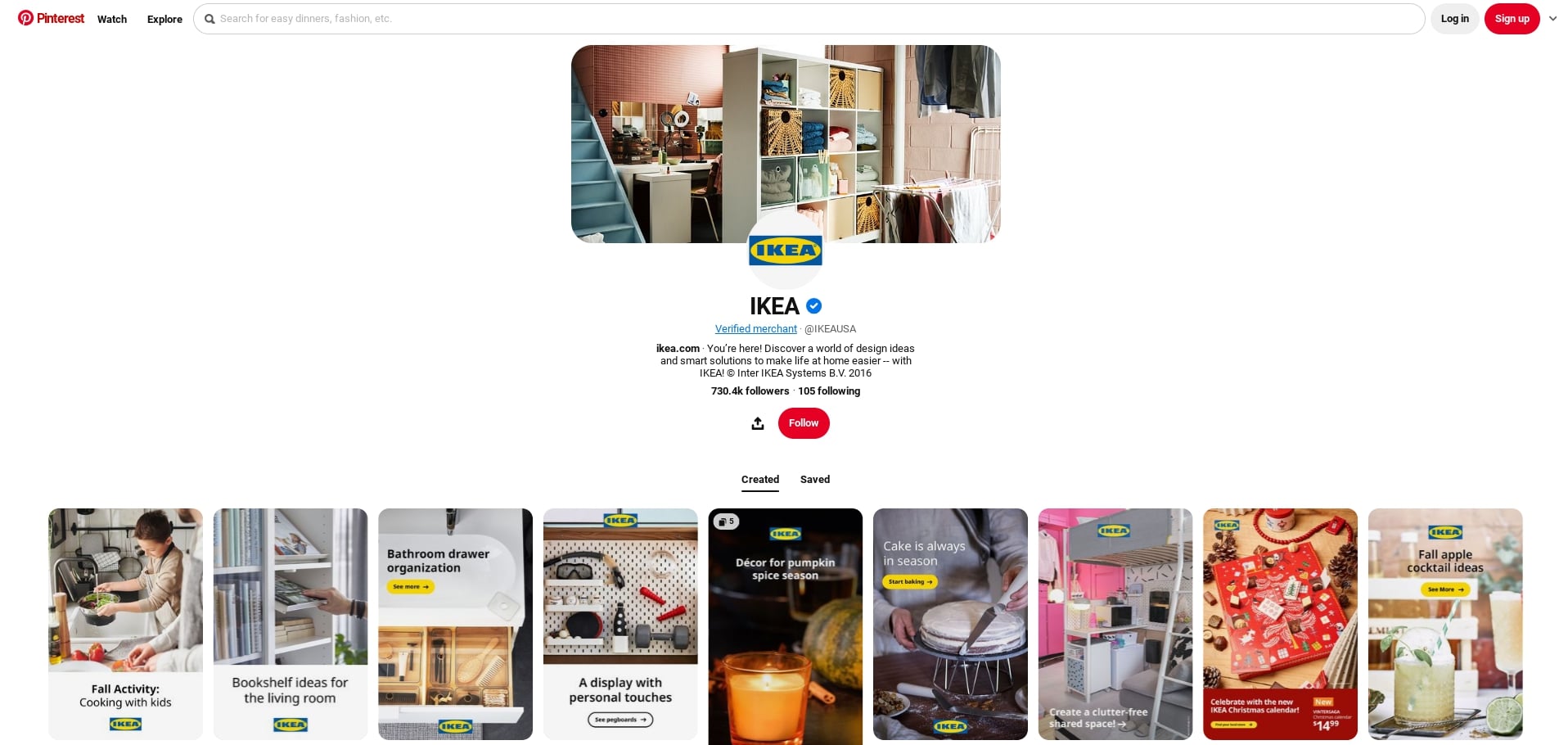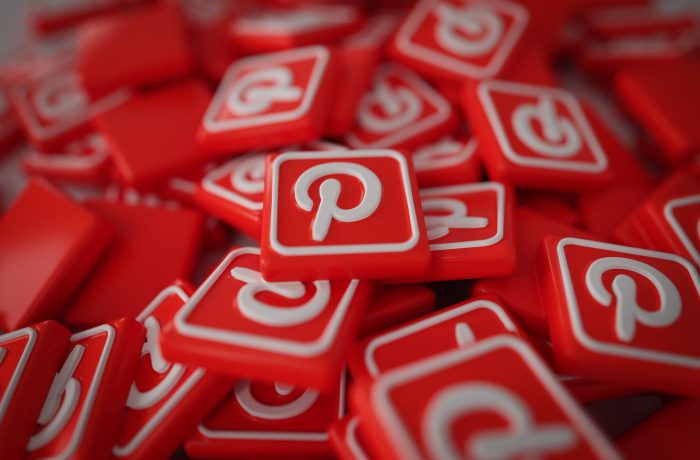Pinterest can be a powerful platform for savvy marketers, offering access to receptive audiences, intuitive tools, and impactful formats.
However, if you want to unlock the full potential of Pinterest marketing, you need to understand the data the platform is giving you.
Knowledge is power, and the more you know about the performance of different audiences, tactics, and messages, the easier it will become to boost engagements and skyrocket conversions.
This is where the Pinterest Analytics tool is key.
By mastering Pinterest Analytics, you can equip yourself with the data you need to implement effective optimizations and maximize ROI.
Let’s take a closer look at the Pinterest Analytics tool, and explore 7 proven strategies that will help you to utilize data-led insights and supercharge your future campaigns.
Understanding the basics of Pinterest Analytics
Before we delve into our expert strategies, it’s crucial that you get to grips with the Pinterest Analytics tool.
\
First things first – how do you access Pinterest Analytics?
On your Pinterest business account, navigate to the “Analytics” tab. Here you’ll find a plethora of information, from audience demographics to pin performance.
Now, while accessing Pinterest Analytics may be a piece of cake, putting the tool to good use is a different story. If you want to dramatically improve the performance of your Pinterest content, you’ll need to stay diligent with data analysis and optimizations.
Think of Pinterest Analytics as your marketing compass.
Without it, you’re likely to end up lost at sea, struggling with inefficient tactics and low-performing content. But with your trusty compass at hand, you can ensure that you’re constantly heading in the right direction, making data-driven decisions that pay dividends.
(That’s our last nautical Pinterest marketing metaphor. Promise.)

Strategy #1: Monitor your top Pins to identify engagement trends
By taking learnings from your most popular pins, you can determine what’s truly resonating with your audience.
If you sort your pins by the number of saves/impressions delivered, you can quickly discover which visuals or topics are driving the most engagement.
For example, if a pin featuring DIY home decor tips is gaining traction, consider creating a blog series or video content in that niche. It’s all about testing different content, analyzing the results, and building on what works!
It’s not enough to just pin content and hope for the best.
Every brand has certain pins that outperform others, and these pins can often create the blueprint for success. This allows you to fine-tune your content strategy, ensuring that your future pins are optimized for maximum engagement.
Identifying high-performing Pins
Understanding Impressions: Impressions measure the number of times a pin appears on a user’s screen. For instance, if your pin about “Eco-friendly Home Decor” is seeing a high volume of impressions, it means Pinterest’s algorithm recognizes its relevance.
However, it’s important to avoid equating impressions with engagements.
While your pin may be appearing frequently on Pinterest and driving reach, that doesn’t mean it’s encouraging your audience to click and learn more.
The Power of Saves and Clicks: These are golden metrics. A save is like a user bookmarking your content for later, showcasing its value to them. Clicks, on the other hand, are immediate validations.
A high click-through rate can indicate an enticing visual or an intriguing pin description, meaning you’re prompting users to engage with your content.
Creating high-impact visuals
Pinterest is all about high-quality visuals, so your pin’s design plays a critical role.
A pin with a clear, high-quality image, accompanied by a concise and compelling text overlay, is infinitely more likely to deliver positive results.
But if you’re not a graphic design wizard, don’t worry. Tools like Canva are highly accessible, enabling you to produce eye-catching pins quickly and easily. It’s also a good idea to split-test different visuals and text overlays to optimize performance.

Optimizing timing & frequency
It’s essential to test different post timings and pin frequencies to determine what works best for your target customers.
Different users will be active at different times on Pinterest, which is why it’s crucial to monitor your analytics carefully and identify the sweet spot for your specific audience.
Strategy #2: Gather valuable audience insights
Knowing your audience is half the battle when it comes to Pinterest marketing.
Your audience is the backbone of your Pinterest strategy. By understanding who they are and what they’re interested in, you can create content that resonates deeply with them.
This goes beyond demographics, too – it’s about diving deep into their behaviors, interest, and engagement patterns on Pinterest to maximize engagement.
The importance of demographics
Gender and Age: These basic metrics can guide the tone and content of your pins. If the majority of your audience is women aged 25-34, then pins about “Top Fashion Trends of 2023” might resonate better than “Retro Styles from the 70s.”
Location-Based Insights: Understanding where your audience is from can guide cultural nuances, impacting everything from colloquial phrases to spellings. If your pins are tailored to audiences in specific locations, they’re more likely to feel relevant and engaging.
The power of seasonal content
Understand the changing interests of your audience. Do they pin more travel content in summer and recipes during the holiday season? Always keep your Pinterest content audience-first, and utilize Pinterest Analytics insights to guide your strategy.
(Pro tip – by building a content calendar, you can ensure that you’re producing pins that align closely with seasonal topics.)

Analyzing competitors
A sneaky bit of competitor analysis can also be hugely beneficial for your Pinterest campaigns.
Look at what competitors (or similar brands) are pinning. This can offer additional insights into trending topics and popular content within your niche.
Strategy #3: Set up website tracking
Every click from Pinterest to your website is a valuable opportunity to learn more about your pins, tactics, and audiences.
By effectively tracking website activity through Pinterest Analytics, you can gain a better understanding of the customer journey and drastically boost conversion rates.
Pinterest Analytics not only provides insights about pin performance but also highlights areas for improvement on your website, from content to design and user experience.
Pinterest tracking – beyond the basics
Conversion tracking: It’s one thing for a user to click on your pin, but does that click convert into a meaningful action? While high volumes of clicks are great for website traffic, you’ll ultimately want to see these clicks transform into tangible conversions.
Be sure to use Pinterest Analytics to track conversion volumes and monitor your conversion rates.
Everything from landing page layouts to CTAs and discounts can influence conversions, so you may need to tweak various elements to reach your conversion goals.
Event triggers: Detailed Pinterest tracking can offer insights into micro-interactions that guide your targeting/messaging.
For instance, maybe users tend to add items to their wish lists rather than their carts. This could prompt a campaign focusing on converting wish-listed items into sales. Or, if users are leaving at the shipping information page, perhaps shipping costs or times are a deterrent.
Segmentation analysis: By segmenting Pinterest-originated traffic, you can understand if certain pins attract more first-time visitors, while others are more popular with returning visitors.
Tailoring content for each segment can enhance user engagement and conversion rates.
All of these insights are incredibly valuable, but to access them, you’ll need to ensure that you’ve set up accurate Pinterest tracking. Click here to learn more about setting up Pinterest tags and monitoring website events through Pinterest Analytics.

Strategy #4: Analyze save & click patterns – and tailor Pins accordingly
While Pinterest is a platform for discovery, how users interact with your pins is crucial in understanding their intent.
A user saving your pin for later may indicate general interest, while an immediate click signals that a user is primed for action and instantly engaged.
By distinguishing between different behaviors (i.e. saves vs clicks) and identifying patterns, you can tailor your content and CTAs to either provide immediate value or long-term resources.
If you can give your target audience exactly the type of content they want, exactly when they need it, you can build long-lasting customer relationships and nurture brand loyalty.
Crafting Pins for saves vs. clicks
Creating evergreen content: Some topics remain timeless. A pin titled “Classic Home Decorating Tips” might continually earn saves, as users frequently find the content relevant. A single piece of quality Pinterest content can deliver a huge amount of long-term value!
Designing for virality: What type of pins generate mass popularity? Stunning visuals, intriguing captions, and universally relatable content can drive users to share, expanding your content’s reach and helping you to engage brand-new audiences.
Deep-diving analytics: By analyzing the ratio of saves to clicks, you can gauge the immediate impact versus long-term value of your pins. For instance, a pin with high saves but low clicks might be a good candidate for a revamped call-to-action.
The key is to strike a careful balance between offering genuinely valuable content and nudging prospects to click with action-oriented pins.

Strategy #5: Review your Pinterest profile performance
Your Pinterest profile is the first impression users get of your brand on the platform.
(And, as we all know, first impressions are a big deal – particularly for social media marketers.)
As a result, ensuring your profile accurately represents your brand, showcases your best content, and generates user engagement is vital for success. An optimized Pinterest profile not only attracts more followers, but also ensures better engagement rates for your pins, boosting your overall Pinterest strategy.
Consistent branding – why it matters
Profile Aesthetics: Every aspect of your Pinterest profile should be designed to reflect your brand identity, including your:
- Profile themes
- Color patterns
- Fonts
- Logos
Consistent branding will also help to make you instantly recognizable to your target audience – not just on Pinterest, but across all of your marketing platforms and online properties.
Engagement metrics: Regularly monitor metrics like profile visits, followers, and comments. A sudden spike can indicate that you’ve launched a promising tactic, while a steep drop indicates that there may be an issue with your strategy.
Feedback loop: Actively engage with Pinterest users who comment on your pins or message your profile. Their feedback can offer candid insights and even ideas for future content.
Plus, when 89% of social media messages are ignored, you can quickly establish yourself as a receptive and engaging brand with consistent replies.

Strategy #6: Evaluate paid Pinterest campaigns separately
While organic reach is essential, paid ad campaigns on Pinterest amplify your content to a broader (yet still highly targeted) audience.
However, paid campaigns need a separate evaluation strategy.
With a budget in place, it’s imperative to ensure that every penny spent is driving results, be it brand awareness, engagement, or conversions. Regularly evaluating and adjusting your paid campaigns based on performance metrics ensures a positive return on investment.
The advantages of Rich Pins
Enhanced engagement: Rich Pins provide more context about a pin, making users more likely to engage. For example, a Product Rich Pin will update with real-time pricing, making it easier for users to decide on purchasing.
Advanced analytics: Rich Pins come with their set of analytics. Monitoring metrics like how often your pin was seen, saved, or clicked can guide budget allocations and ad optimizations.
Targeting & retargeting
Precision targeting: Pinterest allows you to target ads based on interests, keywords, demographics, and more. Running multiple campaigns with varied targeting can help you identify the most responsive audience segments and refine your strategy.
Retargeting benefits: Engaging users who’ve shown prior interest in your brand or pins, either by visiting your website or engaging with previous pins, can yield higher conversion rates.
Remarketing audiences can be extremely profitable, so make sure you have the necessary tracking in place (i.e. website tags) to identify and target these individuals.
Strategy #7: Analyze, adapt, and repeat
The world of Pinterest marketing moves insanely fast, so you’ll need to follow suit if you want to succeed.
Content trends, audience behaviors, and platform features are constantly emerging and changing. To stay ahead of the curve, it’s key to analyze and adapt.
Don’t be afraid to jump on new marketing opportunities and follow what your Pinterest Analytics data is telling you. Maintain a flexible approach to budgeting that allows you to test new tactics and re-direct spend where necessary.
Setting clear performance benchmarks
Competitive analysis: Regularly monitor top performers in your niche. Their successes and failures can offer valuable lessons, whether it’s a new product launch or a different content format.
Goal-oriented benchmarks: Instead of generic goals like “increase traffic,” opt for specific ones like “achieve a 10% month-on-month growth in Pinterest-driven website visits.” The clearer your objectives are, the easier it will be to track progress against them.
Leveraging third-party tools
Beyond native analytics: Tools like Tailwind offer more detailed performance insights, scheduling capabilities, and even content suggestions to enhance your Pinterest strategy. This can be a life-saver when you’re spinning plates and looking for additional support with Pinterest marketing.
Stay updated: With digital platforms constantly evolving, subscribing to Pinterest blogs or forums can keep you updated with the latest features, algorithm changes, or user behavior trends.
When leveraged properly, Pinterest analytics can be a game-changer for the performance of your campaigns.
However, if you want to harness the full power of the tool, it’s not enough to just gather platform data. You’ll need to actively identify performance patterns, capitalize on content trends, and implement optimizations based on real-time insights.
By employing these proven Pinterest Analytics strategies, you’ll be able to harvest & analyze all the data you need to crush your marketing goals and develop a winning content strategy.






